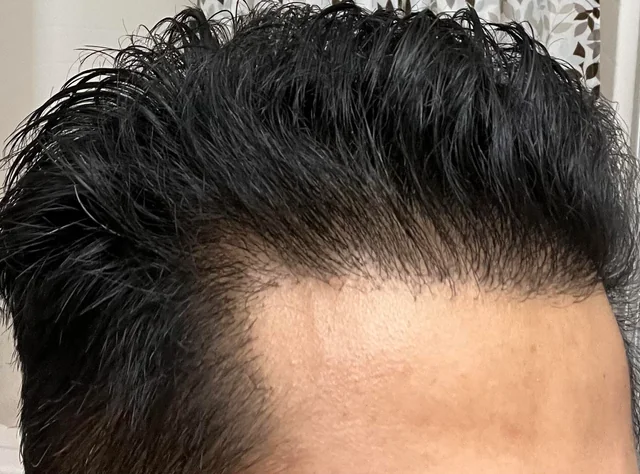A Beginner’s Guide to Hair Transplants in Dubai UAE

Hair loss is a common trouble affecting tens of millions of people round the world, irrespective of age or gender. Whether because of genetics, strain, getting old, or clinical situations, dropping hair can take a toll for your self assurance and self-photo. For the ones searching for a long-term solution, hair transplantation has turn out to be a extraordinarily effective and more and more popular choice. But before you take the plunge, it’s crucial to understand how the method works, what to anticipate, and whether or not it’s the right in shape for you.
This amateur’s guide breaks down everything you need to recognise before considering a hair transplant.
What Is a Hair Transplant?A hair transplant is a minimally invasive surgery that entails taking hair follicles from one part of your frame—normally the again or facets of the scalp—and moving them to areas with thinning or no hair. The idea is straightforward: redistribute healthy hair to repair natural-looking density in regions of loss.
Modern hair transplants awareness on precision and natural aesthetics, making the consequences nearly undetectable while executed via a professional healthcare professional.
Why People Choose Hair TransplantsPeople are searching for hair transplants for an expansion of reasons:
Male or woman pattern baldness
Receding hairlines
Thinning crowns or temples
Hair loss because of harm, burns, or surgical operation
To improve beard, eyebrow, or eyelash density
While topical remedies and medications like minoxidil or finasteride can gradual hair loss, they hardly ever provide permanent effects. Hair transplants, on the other hand, use your own follicles to offer lasting, natural hair increase.
Different Types of Hair Transplant MethodsThere are two number one techniques utilized in hair transplant surgical procedure:
1. Follicular Unit Transplantation (FUT)Also known as the "strip technique," FUT includes casting off a small strip of scalp from the donor region (generally the lower back of the head). The physician then divides this strip into person follicular units and implants them into the bald or thinning location.
Pros: Allows for a excessive number of grafts in one session; normally greater affordable.
Cons: Leaves a linear scar; longer recovery time.
2. Follicular Unit Extraction (FUE)FUE entails extracting individual hair follicles at once from the donor region using a tiny punch tool. These follicles are then implanted into the recipient area separately.
Pros: No linear scarring; quicker recovery; less invasive.
Cons: More time-consuming and often more expensive.
Advanced variations like Direct Hair Implantation (DHI) build on FUE via the usage of specialised tools to implant grafts immediately, supplying more precision and density.
Are You a Good Candidate?Hair transplants aren’t appropriate for each person. Ideal candidates usually have:
Sufficient donor hair: Enough healthy hair on the sides or returned of the scalp.
Stable hair loss: Hair loss that has stabilized, decreasing the hazard of future thinning.
Realistic expectations: Understanding what a transplant can and can't reap.
Good usual fitness: To make certain right recovery and decrease headaches.
A session with a hair transplant professional is important to determine your suitability.
What Happens During the Procedure?The method is typically finished under local anesthesia and can take 4 to 8 hours relying at the variety of grafts.
The method consists of:Preparation: The donor location is trimmed and numbed.
Extraction: Hair follicles are eliminated the use of FUT or FUE.
Graft placement: The health care professional creates tiny incisions in the recipient region and places each follicle cautiously.
Post-op care: The scalp is cleaned and bandaged, and you’re given healing instructions.
Most patients go back domestic the same day.
Recovery and AftercareRecovery is commonly quick, but proper care is vital for premiere effects.
Day 1–three: Avoid touching or washing the scalp.
Day four–7: Gentle washing might also start; scabbing may additionally appear.
Week 2–three: Transplanted hairs may fall out (a everyday manner referred to as surprise loss).
Month 3–4: New hair boom starts.
Month 6–12: Full outcomes turn out to be visible, with progressed thickness and insurance.
Avoid intense exercising, solar exposure, and cruel hair merchandise at some stage in early recovery.
Risks and Potential Side EffectsHair transplants are commonly secure while executed by qualified experts, however ability dangers include:
Swelling or bruising
Infection or bleeding
Scarring (specifically with FUT)
Uneven hair increase
Temporary numbness
Choosing an skilled healthcare professional appreciably reduces these dangers and guarantees higher results.
How Much Does It Cost?Hair transplant charges range depending on numerous factors:
Number of grafts required
Type of method used (FUE is usually pricier than FUT)
Surgeon’s enjoy and health facility reputation
Geographic place
On average, fees range between $3,000 to $15,000. Some international locations, along with Turkey, India, and Pakistan, provide brilliant hair transplants at greater lower priced fees, attracting international sufferers.
Final ThoughtsA hair transplant may be a lifestyles-changing funding for your appearance and self-self assurance. While it’s no longer an in a single day solution, the long-term benefits may be virtually transformative when completed efficiently. By educating your self, deciding on the right medical professional, and putting practical expectations, you may make an knowledgeable selection that yields pleasing, natural-looking effects.
Remember: The key to a successful hair transplant lies in practise, research, and trusting qualified experts.
